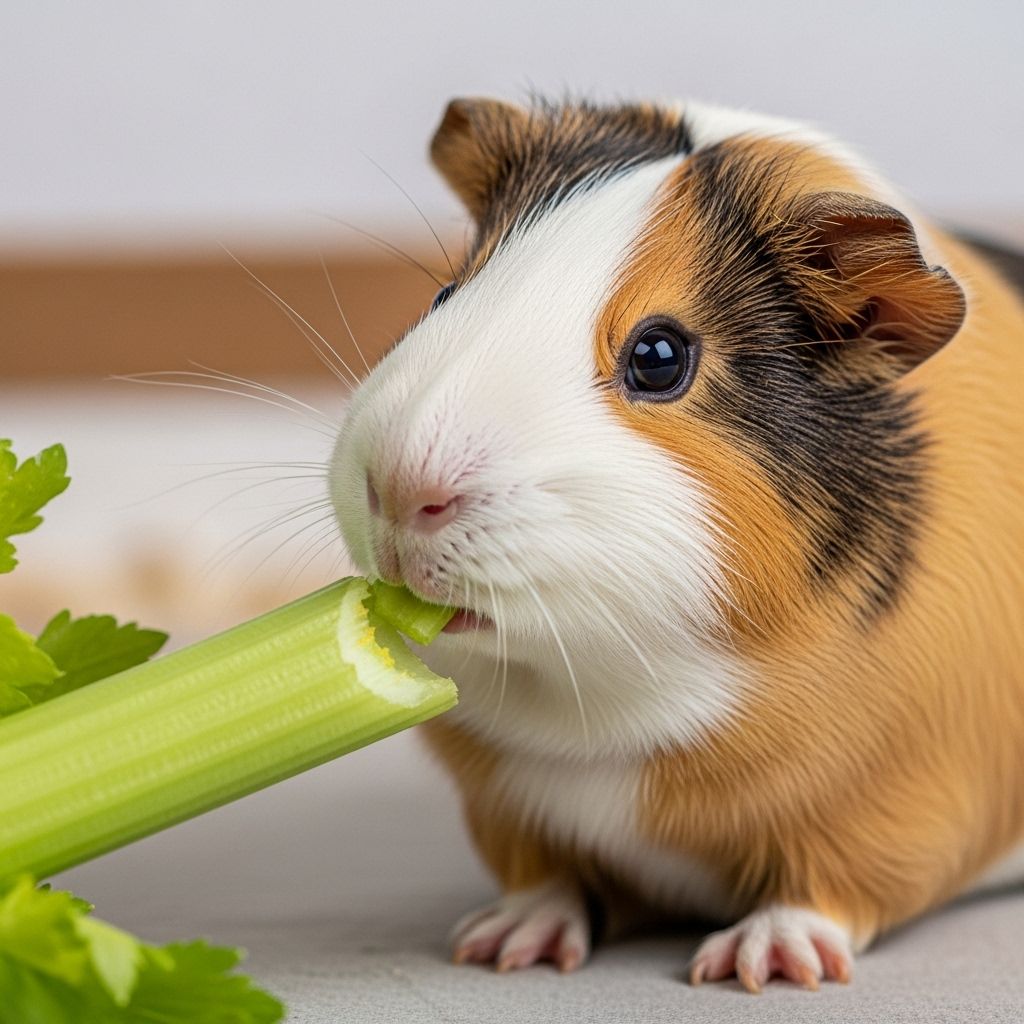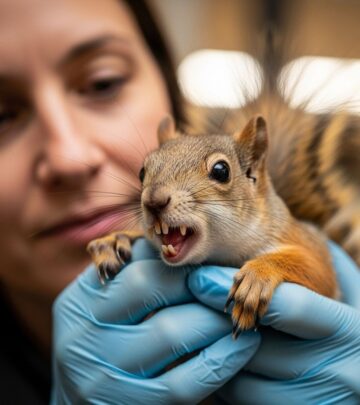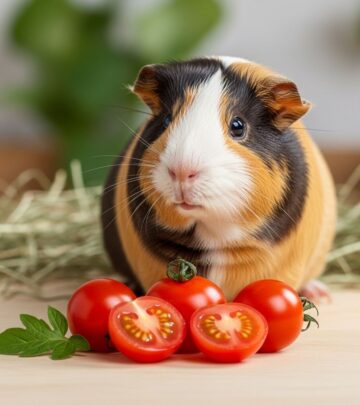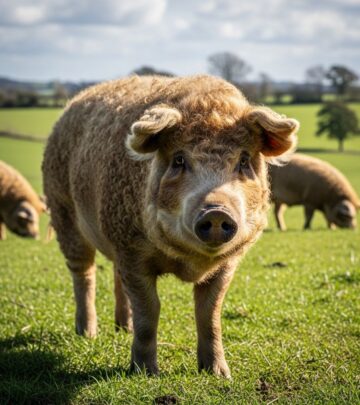Can Guinea Pigs Eat Celery: Essential Feeding Guide
Discover if celery is safe for guinea pigs, potential health benefits, choking risks, and how to prepare it for your pet.

Image: HearthJunction Design Team
Can Guinea Pigs Eat Celery?
Guinea pigs are adorable herbivores with sensitive digestive systems. Many pet owners often wonder, “Can guinea pigs eat celery?” The simple answer is yes, guinea pigs can eat celery, but there are important caveats you need to know before feeding it to your furry friend.
Is Celery Safe for Guinea Pigs?
Celery is generally safe for guinea pigs when served in the right way and in moderation. Its high water content can be refreshing and hydrating, but it’s not without risks. Owners must take special care to avoid common pitfalls, such as the risk of choking on celery’s fibrous strings and overfeeding, which can lead to digestive upset.
- Safe in Moderation: Celery should be an occasional treat, not a dietary staple.
- Preparation Matters: Chop celery into small pieces and remove the tough strings before serving to reduce choking hazards.
- Not All Parts Are Equal: While stalks are fine in small amounts, leaves and especially stringy portions should be avoided or served with caution.
Health Benefits of Celery for Guinea Pigs
Although celery isn’t essential, it can offer some nutritional benefits for guinea pigs when incorporated into a varied diet.
- Vitamin C: Celery contains vitamin C, which is crucial for guinea pigs as they cannot produce this vitamin on their own. Adequate vitamin C prevents scurvy, a common health issue in guinea pigs.
- Fiber Content: The fiber in celery supports healthy digestion and helps regulate bowel movements, reducing the risk of constipation.
- Low-Calorie Snack: With its high water and low calorie content, celery makes for a healthy, hydrating snack.
- Minerals: Celery is a source of potassium, which supports normal nervous system and muscle function.
Nutrition Table: Celery’s Key Nutrients (per 100g)
| Nutrient | Amount | Benefit |
|---|---|---|
| Vitamin C | 3.1 mg | Prevents scurvy, boosts immune health |
| Vitamin A | 22 IU | Important for vision, immune system |
| Potassium | 260 mg | Supports heart and muscle function |
| Fiber | 1.6 g | Promotes digestive health |
| Water | 95 g | Keeps guinea pigs hydrated |
Potential Risks and Drawbacks of Celery
Despite its benefits, celery isn’t without its risks for guinea pigs. Understanding these dangers will help you make the best decisions for your pet’s health.
- Choking Hazard: The stringy fibers running along the celery stalk can be tough for guinea pigs to chew and swallow, leading to potential choking. Always remove these strings and cut the stalk into small pieces.
- Digestive Issues: The high water content can cause soft stools or diarrhea if excessive amounts are given. Introduce celery gradually and monitor your pet for any adverse reactions.
- Oxalic Acid: Celery contains oxalic acid, which binds with calcium and may contribute to bladder stone formation if fed in large quantities. Serve only occasionally, especially if your guinea pig is prone to urinary issues.
- Nutrient Imbalance: Feeding too much celery can crowd out more nutrient-dense vegetables like bell peppers or leafy greens that are richer in vitamin C.
How Much Celery Can Guinea Pigs Eat?
Moderation is key when offering celery. A small slice, roughly one or two inches in length, once or twice a week is sufficient for most guinea pigs. Always observe your pet after feeding a new food for the first time and watch for signs of digestive discomfort.
- Serving Size: 1–2 thin slices per feeding session
- Frequency: Once or twice per week
- Preparation: Remove tough strings, chop into small, manageable pieces, and serve raw (never cooked)
How to Prepare Celery for Guinea Pigs
Proper preparation is crucial for ensuring celery is a safe snack for your guinea pig. Follow these easy steps:
- Wash celery thoroughly under cold running water to remove pesticides and dirt.
- Cut off the leafy tops and roots; set leaves aside or discard, as some guinea pigs may not like them or may be more sensitive to them.
- Remove the fibrous strings from the outside of the stalk by peeling them away.
- Slice the celery into small, bite-sized pieces (about the size of a pea).
- Offer celery plain, without any sauces, salt, or seasonings.
- Monitor your guinea pig for any signs of choking or digestive upset after eating.
Foods to Pair with Celery
Celery should be part of a colorful, varied vegetable mix to ensure balanced nutrition. Good pairings include:
- Bell peppers (especially red and green, for higher vitamin C content)
- Cucumber (hydrating, easy to chew)
- Zucchini
- Leafy greens such as romaine lettuce, kale, or spinach (in moderation)
- Carrot slices (high in vitamin A, but also high in sugar—moderate amounts only)
Signs Your Guinea Pig May Not Tolerate Celery
- Diarrhea or watery stools
- Gas or bloating
- Lethargy or loss of appetite
- Choking, coughing, or struggling to eat
If you notice any of these signs, discontinue celery and consult your veterinarian.
What About Celery Leaves and Strings?
Celery leaves are technically safe in very small quantities, but can be stronger in flavor and slightly more likely to contain higher levels of oxalic acid. Most experts recommend removing both the leaves and the tough, stringy parts from celery before giving it to guinea pigs to minimize choking and digestive risks.
- Celery Strings: Always remove; they are a top choking hazard.
- Celery Leaves: Okay in tiny amounts, but not recommended as a regular treat.
Best Vegetables for Guinea Pigs: How Does Celery Compare?
| Vegetable | Vitamin C Content | Risks | Recommended Frequency |
|---|---|---|---|
| Bell Pepper | High | Low | Daily |
| Romaine Lettuce | Medium | Low (except iceberg, which should be avoided) | Frequent |
| Celery | Low-Medium | Choking hazard, high water | Once or twice weekly |
| Carrot | Low | Sugar content | 2–3 times/week |
Common FAQ: Guinea Pigs and Celery
Can baby guinea pigs eat celery?
It’s best to avoid giving celery to baby guinea pigs under eight weeks old. Their digestive systems are more sensitive, so wait until they are older before introducing celery, and always start with a tiny amount.
Can guinea pigs eat cooked celery?
No. Guinea pigs should only eat raw vegetables. Cooked celery loses nutrients and may be difficult for them to digest.
How do I know if my guinea pig likes celery?
Offer a small piece and observe. If your guinea pig eats it eagerly and shows no signs of discomfort, celery can be a suitable occasional treat.
How do I prevent choking when feeding celery?
- Remove all tough strings from the stalk.
- Chop celery into very small, manageable pieces.
- Supervise your guinea pig while eating new foods.
Is the oxalic acid in celery a big concern?
The oxalic acid in celery is relatively low, but if your guinea pig is prone to urinary tract or bladder problems, you may want to avoid celery or offer it rarely.
Tips for Adding Celery to Your Guinea Pig’s Diet
- Always introduce celery gradually and monitor for any digestive problems.
- Rotate celery with other veggies to ensure a balanced intake of nutrients.
- Never substitute celery for core foods like quality guinea pig pellets and unlimited timothy hay.
- Consult with your veterinarian regarding dietary changes, especially if your guinea pig has a history of urinary or digestive health problems.
Conclusion: Celery as an Occasional Treat
Celery can be a safe, hydrating, and nutritious addition to your guinea pig’s diet when served correctly and in moderation. While its vitamin and mineral content supports overall health, owners must be vigilant about preparation and observe for any adverse reactions. Remember, variety, moderation, and careful preparation are the keys to a healthy and happy guinea pig!
SEO-Optimized Quick Reference Table
| Can Eat? | Serving Size | How Often? | Prep Needed? |
|---|---|---|---|
| Yes | 1–2 small pieces | 1–2x per week | Strings removed, chopped, washed |
Frequently Asked Questions (FAQs)
Q: Can guinea pigs eat celery leaves?
A: In small amounts, but celery leaves contain more oxalic acid, so moderation is important.
Q: Can celery cause kidney stones in guinea pigs?
A: If fed in excess, celery’s oxalic acid can contribute to urinary issues or bladder stones, especially in sensitive guinea pigs.
Q: What vegetables are better than celery for guinea pigs?
A: Bell peppers, romaine lettuce, and certain herbs like parsley or cilantro are more nutrient-rich and safer as daily staples.
Q: How should celery be introduced to a guinea pig’s diet?
A: Add a tiny piece and observe for 24 hours. If no digestive upset occurs, you can gradually increase to the recommended serving.
Q: Should celery replace any part of my guinea pig’s staple diet?
A: No. Celery is an occasional treat and should not replace core foods like hay or pellets.
References
Read full bio of Shinta












